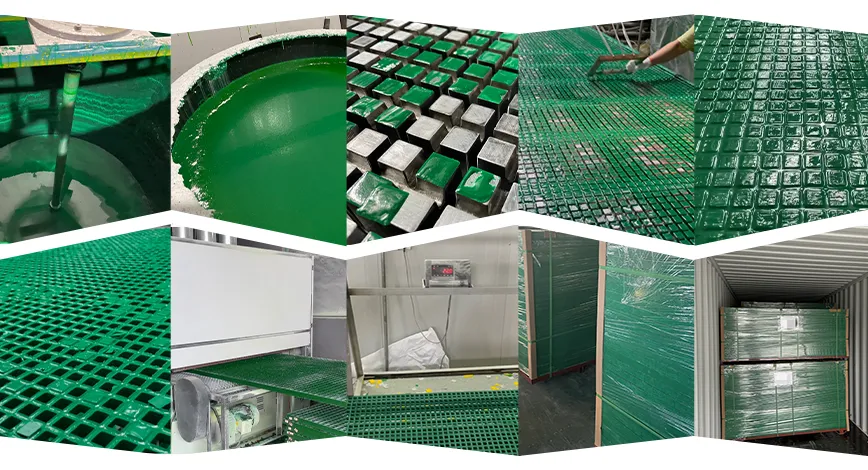loading...
- No. 9, Xingyuan South Street, Dongwaihuan Road, Zaoqiang County, Hengshui, Hebei, China
- admin@zjcomposites.com
- +86 15097380338
- Welcome to visit our website!
Exploring the Benefits and Applications of Fiber Reinforced Plastic Pressure Vessels in Modern Engineering
FRP Pressure Vessels A Comprehensive Overview
Fiber Reinforced Polymer (FRP) pressure vessels have emerged as a transformative solution in various industries, ranging from oil and gas to wastewater treatment. These vessels exploit the unique characteristics of composite materials to offer advantages over traditional metal pressure vessels. Understanding the composition, benefits, and applications of FRP pressure vessels is crucial for industry professionals and decision-makers.
Composition and Structure
FRP pressure vessels are primarily composed of a polymer matrix reinforced with fibers, typically glass or carbon. The matrix provides structural integrity and corrosion resistance, while the fibers enhance strength and stiffness. The manufacturing process often involves techniques such as filament winding, which allows for the precise application of material and enables the optimization of strength-to-weight ratios.
The design of FRP vessels is governed by rigorous standards and codes, which ensure that they can withstand the pressures and temperatures of their intended applications. Notably, the design process includes considerations for both the external and internal pressures, factoring in the types of fluids contained within the vessel.
Advantages of FRP Pressure Vessels
FRP Pressure Vessels A Comprehensive Overview
Furthermore, FRP pressure vessels are lightweight compared to traditional materials like steel and titanium. This inherent lightweight property facilitates easier transportation and installation, leading to enhanced efficiency in construction and operational processes. The reduced weight also minimizes the need for heavy support structures, contributing to overall cost savings in large-scale projects.
frp pressure vessels

Thermal insulation is another significant benefit of using FRP pressure vessels. The composite materials offer better thermal performance, which is crucial for applications requiring temperature regulation. This capability can lead to energy savings and improved process efficiency in various industrial settings.
Applications in Industry
FRP pressure vessels find utility in a multitude of applications. In the oil and gas sector, they are employed for transporting and storing corrosive fluids, chemicals, and gases. Their resistance to extreme conditions makes them suitable for offshore platforms and onshore facilities.
In the field of water treatment, FRP vessels are frequently utilized in reverse osmosis systems and filtration processes. Their corrosion resistance and adaptability to various pressures and temperatures enhance the reliability of water purification systems.
Additionally, the aerospace and automotive industries are beginning to harness the benefits of FRP pressure vessels. Lightweight and durable, these vessels can potentially improve the performance and efficiency of vehicles while reducing emissions.
Conclusion
As industries continue to seek innovative solutions to improve efficiency and reduce costs, FRP pressure vessels stand out as a viable alternative to traditional metal vessels. Their unique advantages, including corrosion resistance, lightweight properties, and thermal insulation, make them ideal for a wide range of applications. As manufacturing technologies advance and more organizations recognize the benefits of FRP, the adoption of these vessels is likely to grow, further solidifying their place in modern industrial practices. Understanding the potential of FRP pressure vessels is essential for any forward-thinking professional aiming to enhance operational efficiency and reliability in challenging environments.
-
GRP Structures: The Future of Lightweight, High-Performance EngineeringNewsJun.20,2025
-
FRP Water Tank: High-Performance Storage for Corrosive and Clean Water SystemsNewsJun.20,2025
-
FRP Square Tube: The New Industry Standard for Chemical and Structural ApplicationsNewsJun.20,2025
-
FRP Pultruded Profiles: The Ultimate Choice for Lightweight Structural StrengthNewsJun.20,2025
-
FRP Handrails: The Safer, Smarter, and Stronger Choice for Modern InfrastructureNewsJun.20,2025
-
FRP Grating: The Smart Solution for Durable, Lightweight Industrial FlooringNewsJun.20,2025
-
Why Choose a Galvanized Water Tank for Your Storage NeedsNewsMay.21,2025
